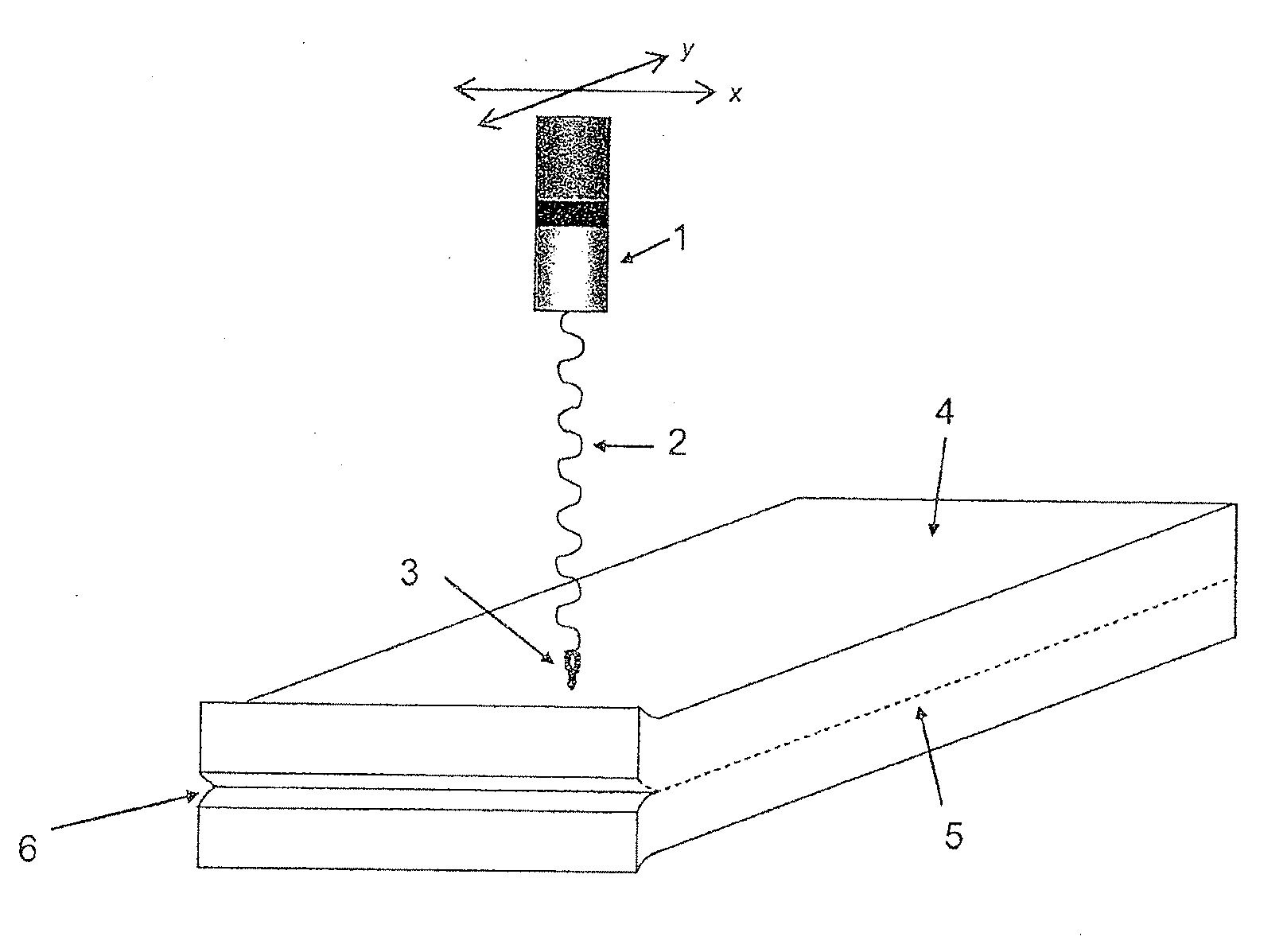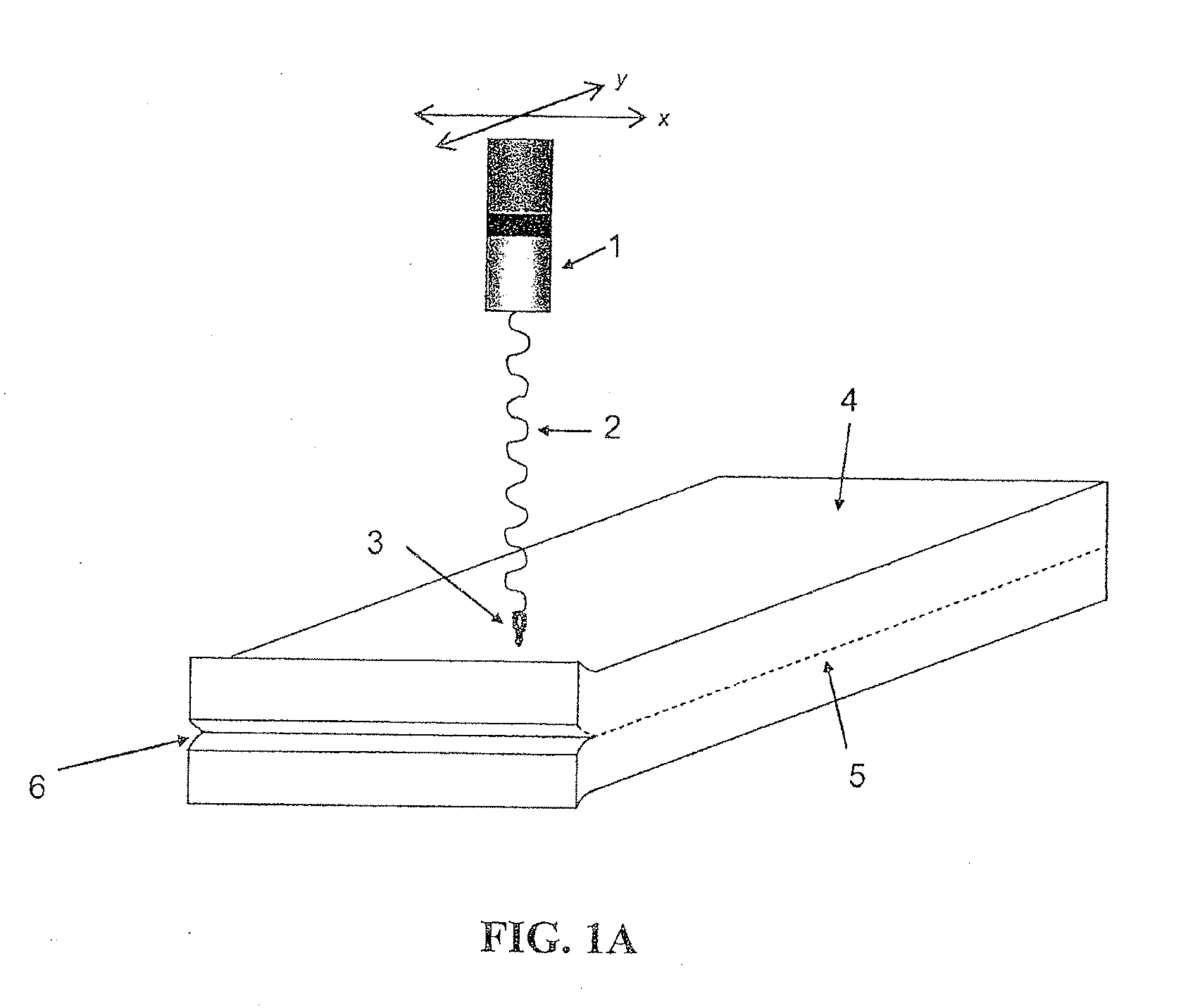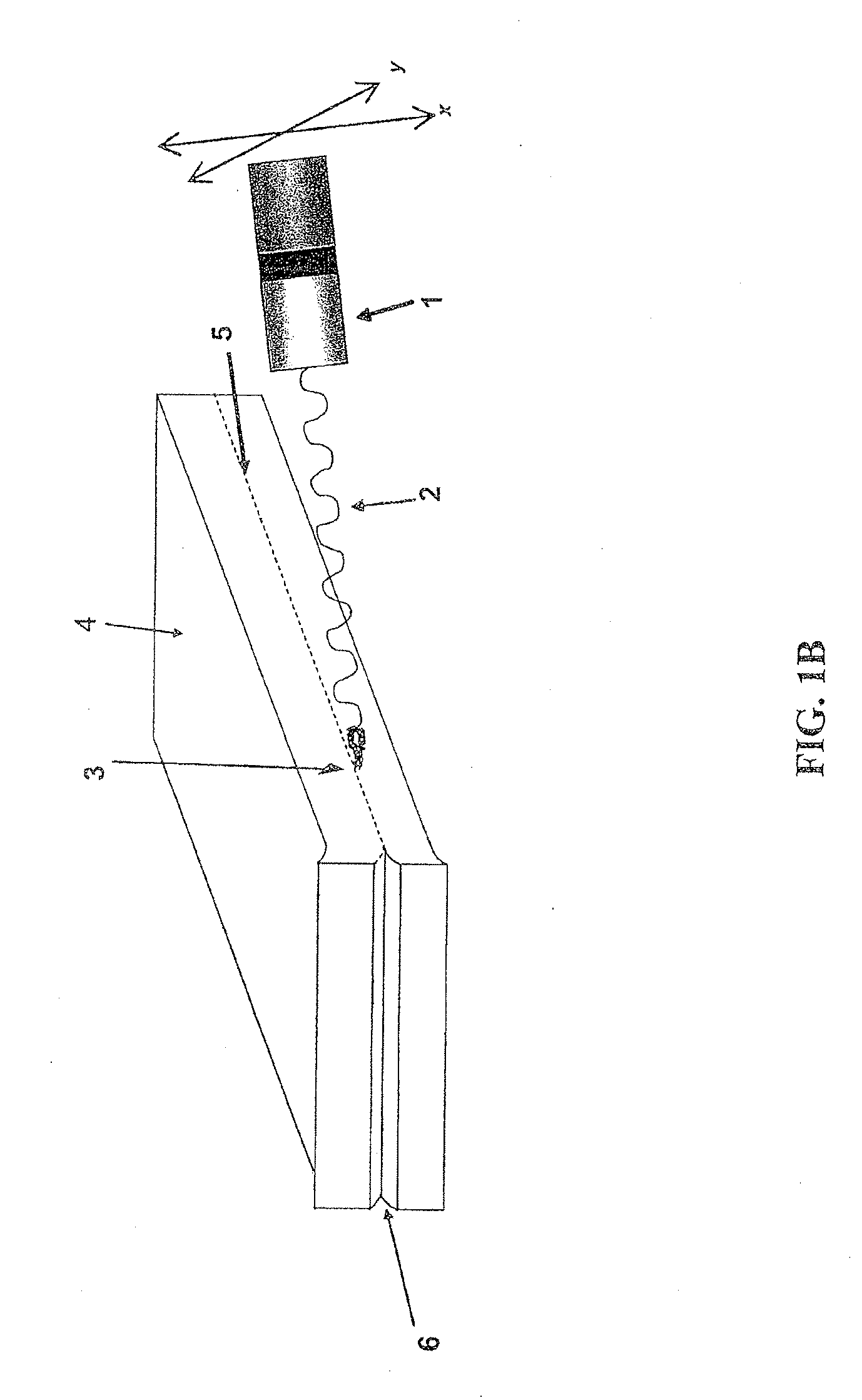Ultrashort pulse laser applications
a technology of ultrashort pulse and laser, applied in the field of ultrashort pulse laser applications, can solve the problems of ineffective separation or removal of biological tissue layers, damage to underlying layers or surrounding tissue, and waste of instruments,
- Summary
- Abstract
- Description
- Claims
- Application Information
AI Technical Summary
Benefits of technology
Problems solved by technology
Method used
Image
Examples
example 1
Experimental Set-Up
[0118]A schematic of the experimental setup is shown in FIGS. 2a and 2b. An Erbium Doped Fiber Laser (Raydiance, Inc) operates at wavelength 1552 nm with a pulse duration of 1.1 pico-second was used in the experiments. The repetition rate is tunable between 1 to 500 KHz and the pulse energy is variable between 1-5 μJ. The laser beam generated by the system was modified by an astigmatism correction mirror and was launched into a long working distance objective lens (M Plan Apo NIR 20x / 0.4 N.A., Mitutoyo). The energy loss after the lens is about 50-60%. The output focused beam has a diameter of about 8 μm.
[0119]The target sample was fixed to a lab-made attitude adjustable work fixture which was placed on a programmable 3-D automated Precision Compact Linear Stage (VP-25XA, Newport). The automated stage moves at a speed range between 1-25 mm / s.
[0120]In an alternative set-up, the stage can remain stationary while the laser source is mobile, or both the stage and the l...
example 2
Ablation of Growth Media by USP Laser
[0123]USP laser beam was applied to a collagen gel having mold growth on its surface to determine whether the beam can remove the mold from the collagen gel surface. The beam was applied at the parameters shown in Table 2.
TABLE 2Parameters of USP laser used for ablating mold on a collagen gel.Pulse ParameterSettingDuration1.1 psEnergy5μJRepetition Rate5.05 kHzScanning Velocity5mm / sWavelength1552 nm
[0124]Mold was grown on the surface of a collagen gel, as shown in FIG. 4a. A magnified view of the surface of the collagen gel clearly shows that the mold grew across the surface of the gel (FIG. 4b).
[0125]The USP laser was applied at various working distances, i.e., the distances between the laser source and the sample. The effects of the USP laser on mold ablation are exhibited in FIGS. 4c and 4d, which show bands where the surface was ablated. The bands were generated by laser applied at different working distances, and suggest that the working dist...
example 4
Ablation of Blood from Slide Covered with a Packaging Material by USP Laser
[0137]USP laser beam was applied to a slide having blood on its surface, such that the slide is covered with a translucent packaging material, in order to demonstrate the capability of the USP laser to ablate a surface through another material. The beam was applied at the parameters shown in Table 7.
TABLE 7Parameters of USP laser used for ablating blood from a slide.Pulse ParameterSettingDuration1.1psEnergy5μJRepetition Rate5.05kHzScanning Velocity5mm / sWavelength1552nm
[0138]A transmission test of the packaging materials (TYVEK and KAPAK) revealed how the beam was transmitted through the packaging. This is shown in Table 8.
TABLE 8Transmission test of package materials.Package ComponentTransmission at wavelength 1552 nmSecond layer89.6%First layer, plastic side89.8%First layer, fiber side15.9%
[0139]The USP laser beam ablated the blood from the surface of the slide through the packaging material. While the slide...
PUM
 Login to View More
Login to View More Abstract
Description
Claims
Application Information
 Login to View More
Login to View More - R&D
- Intellectual Property
- Life Sciences
- Materials
- Tech Scout
- Unparalleled Data Quality
- Higher Quality Content
- 60% Fewer Hallucinations
Browse by: Latest US Patents, China's latest patents, Technical Efficacy Thesaurus, Application Domain, Technology Topic, Popular Technical Reports.
© 2025 PatSnap. All rights reserved.Legal|Privacy policy|Modern Slavery Act Transparency Statement|Sitemap|About US| Contact US: help@patsnap.com



